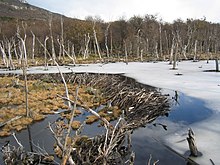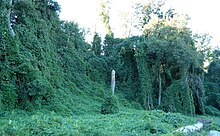
Back Indringerplant Afrikaans نوع مجتاح Arabic Especie invasora AST İstilaçı növlər Azerbaijani Инвазивен вид Bulgarian ကကျော်ႏကာႏလွဉ် ခွိုꩻမျိုꩻကွဲꩻဖုံႏ BLK Invazijska vrsta BS Espècie invasora Catalan Invazní druh Czech Invasiv art Danish




An invasive species is an introduced species that harms its new environment.[2] Invasive species adversely affect habitats and bioregions, causing ecological, environmental, and/or economic damage. The term can also be used for native species that become harmful to their native environment after human alterations to its food web. Since the 20th century, invasive species have become serious economic, social, and environmental threats worldwide.
Invasion of long-established ecosystems by organisms is a natural phenomenon, but human-facilitated introductions have greatly increased the rate, scale, and geographic range of invasion. For millennia, humans have served as both accidental and deliberate dispersal agents, beginning with their earliest migrations, accelerating in the Age of Discovery, and accelerating again with international trade. Notably invasive plant species include the kudzu vine, giant hogweed, Japanese knotweed, and yellow starthistle. Notably invasive animals include European rabbits, domestic cats, and carp.
- ^ "Global Compendium of Weeds: Vinca major". Hawaiian Ecosystems at Risk project (HEAR). Archived from the original on March 4, 2016. Retrieved February 13, 2020.
- ^ Cite error: The named reference
daviswas invoked but never defined (see the help page).